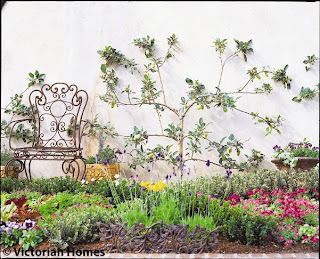Designer Nancy Toon has lived in palaces, estates and posh townhouses but found a way to make her big style shine in a small country house. She shares her tips for getting chic style no matter where you are.
Working at Home
Nancy uses her home as a testing ground for her new projects and merchandise. “I use my house as a workshop,” she says. “It is very important to me that I only offer my customers things that I would want.”
This rotating array of items also helps to keep her design stimulated and evolving. As things make their way in and out, it helps to keep Nancy in touch with how her clients live and what they would want.
“Being based in the Hamptons, our clients come to their weekend homes to relax with friends and family and so our design is based on their requirements for casual but sophisticated rooms for elegant living and entertaining,” she says.
- I like starting out with large-scale furniture. In a large room, it is substantial and provides a good foundation; in small spaces, it creates warmth and coziness.
- Then I like to add textures in the fabrics. I use a lot of linens and white denim because it’s very practical, and neutral backgrounds allow you to change and update your look. I add patterns in pillows, and textures are found in the woods I use and peeling-paint patinas in accessories.
- Working with today’s much simpler palettes, you have to layer, otherwise the look can easily fall flat and feel cold. Use a variety of textures and subtle patterns.
- If you mix new with old you get comfort of newly designed items with the depth of antiques.
- Accessories are what really pull your look together. I like to use metals with great textures. Antique mercury, hand-blown glass candlesticks, natural corals from the beach— these are elements that add unique style and personality.
Working at Home
Nancy uses her home as a testing ground for her new projects and merchandise. “I use my house as a workshop,” she says. “It is very important to me that I only offer my customers things that I would want.”
This rotating array of items also helps to keep her design stimulated and evolving. As things make their way in and out, it helps to keep Nancy in touch with how her clients live and what they would want.
“Being based in the Hamptons, our clients come to their weekend homes to relax with friends and family and so our design is based on their requirements for casual but sophisticated rooms for elegant living and entertaining,” she says.
By Jickie Torres
Photography by Jacqueline deMontravel
Photography by Jacqueline deMontravel
























